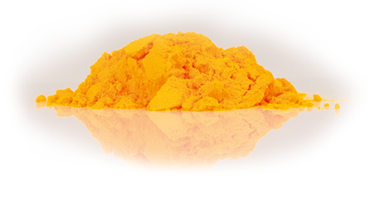Is there any difference in
various Q10 products?
Yes, there can be considerable differences in the various Q10 products in terms of bioavailability and efficacy depending on the raw material used and the treatment that this raw material has received.
The Q10 raw material is an orange crystalline fat-soluble substance without odour and taste and with next to no absorption in the body. The absorption of unprocessed Q10 powder is less than 1%. So, in order to make Q10 absorbable from the intestine, the manufacturer has to treat the raw material in a special way so that all the Q10 molecules are released and can be absorbed from the intestinal mucosa.

This problem of low Q10 bioavailability has been resolved by the company Pharma Nord whose Q10 products are dissolved in vegetable oil after being given a special heat pretreatment to ensure that the Q10 crystals are completely dissolved into single molecules at body temperature for easy assimilation in the intestine.
Superior absorption at body temperature |
|
|
|
|
|
|
|
|
|
|
|
|
|
|
Special treatment of the Q10 is needed to obtain good absorption at body temperature. |
|









 One of the main reasons for the superior bio-availability of Myoqinon Q10 is the unique process used to dissolve the Q10 in oil. Here you see unprocessed Q10 in a crystal form that hinders absorption.
One of the main reasons for the superior bio-availability of Myoqinon Q10 is the unique process used to dissolve the Q10 in oil. Here you see unprocessed Q10 in a crystal form that hinders absorption. An inferior preparation is more like a mixture of Q10 crystals and oil, which will result in poor bioavailability of the active Q10.
An inferior preparation is more like a mixture of Q10 crystals and oil, which will result in poor bioavailability of the active Q10. Myoqinon Q10 is prepared through a special heating process that transforms the molecular structure of the Q10 from rough crystals to light molecules.
Myoqinon Q10 is prepared through a special heating process that transforms the molecular structure of the Q10 from rough crystals to light molecules. At body temperature, the light molecules of Q10 dissolve, thereby creating a homogeneous solution that is easily absorbed by the body.
At body temperature, the light molecules of Q10 dissolve, thereby creating a homogeneous solution that is easily absorbed by the body.